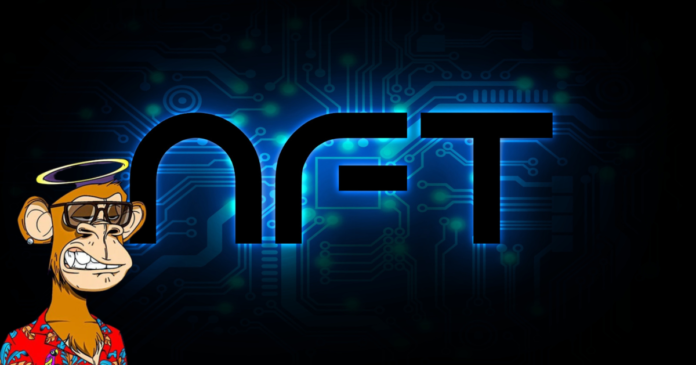Digital artwork is being sold left and right for flashier amounts of money day by day and at this point, all that’s left to do is wonder whether NFTs will ever go out of fashion.
Will the rise of non-fungible tokens ever slow down? If you’re wondering what the thrill surrounding NFTs is all about you’ve come to the right place here at our site dedicated crypto Blog. We’re dedicated to growing your crypto education in this article you have the chance to learn about crypto’s most innovative product as of yet. We’re going to be analyzing market trends and one special trend that caught everyone’s attention this year is the rise of NFTs. To get a grip on why they’re so important for the decentralized economy you will of course need to understand how NFTs work.
Fungible Assets
An NFT is a type of cryptocurrency that focuses on one special property fungibility. Fungibility is basically a property that represents an asset’s ability to be exchanged with another asset of the same type. For example, a dollar has the same value as any other dollar, and under no condition does that ever change. The same goes for cryptocurrencies. A bitcoin has the same value just like another bitcoin. 0.5 BTC naturally has a different value but it is still fungible compared to another set of 0.5 coins. So now that you get the idea behind fungible assets. It’s time for us to explain their opposite non-fungible assets.
Non-Fungible Assets
Think of your favorite painting for a moment. There’s only one version of it and it has been created by a single author who retains ownership over it. So if we compare your painting of choice to a different one do we think that it’s possible to exchange them as if they had the same value? Of course, not the key word here is uniqueness van Gogh’s starry night is in no way comparable in value or physical properties to Picasso’s Guernica. They’re both amazing pieces of art but in a monetary way, we can’t think of them as equals.
Since there’s only one original for each painting that also means that there can be only one owner at any point in time. That’s what fungibility is truly all about. The state of being unique compared to an item of the same class or type combined with the possibility to have a single owner. Non-fungibility in NFTs appears in the form of yet again unique digital tokens that serve the purpose of representing digital ownership over a real-world or online asset.
Crypto users can utilize smart contracts to create such NFTs and basically legitimize their ownership over a song, artwork, meme, property, tweet, land, website, and anything else that you can think of. The possibilities are endless be it on the material or digital plane as long as it exists there’s a way to convert your creation into a digital token, but despite the fact that NFTs hold great fundamental value, especially in terms of how they assist artists with accessing decentralized markets and bypassing obstacles and limitations found in legacy environments.

The reason why they’ve gained attraction is to believe it or not extremely volatile speculative value. Cryptocurrency investors are prone to investing in highly volatile assets as they provide higher returns than normal. Risks are naturally sky high the better the returns are but that doesn’t seem to prevent anyone from hunting with the pack and investing in the flavor of the week.
What usually happens is that small trends snowball into concrete market cycles full of hype and enthusiasm due to the enormous market size that forms in a short period of time.
Does that ring a bell? this is exactly what we’ve seen with NFTs this year. Seeing how many users and investment firms have jumped onto bandwagons such as crypto punks, wearable, open sea, and other marketplaces highly advertised by crypto Twitter. It was only natural for the rest of the community to follow suit and join as well. After all, why not participate in a euphoric wave when there’s an opportunity to seize enormous amounts of wealth and capitalize on a supposed opportunity in a lifetime?
By all means possible the hype that we see now is comparable to the early stages of yield farming and if we dare say even the ICO craze that got the world’s attention in 2017. Not to mention the NFT sector went as far as to entrench itself in the Defi market in the form of a dominant trendsetter. Don’t believe the hype there’s enough data roaming around to feed your curiosity. Statistics from non-fungible.com show us that NFT sales rose parabolically in the month of august reaching a record weekly volume average of 375 million dollars. For context figures from July point to a weekly 7-day volume of only 50 million which boils down to a 650% rise within the scope of one month.
What contributed to this sudden rise?
What contributed to this sudden rise is that several crypto-focused investment firms have joined the craze by contributing millions of dollars to specific NFT platforms. We’ve seen paradigm join the race after purchasing NFTs from the newly launched sci-fi card game parallel.
For a space as small as non-fungible tokens the appearance of any reputable player is a site to behold. Investments made by the aforementioned firms are comparable to Microstrategy’s entry into the crypto market as a sizable corporate company. Which as we all remember has led to a drastic rise in both retail and institutional activity. Suppose we’re to believe that NFTs tread in a similar environment. Seeing the segment explode in the months to come shouldn’t come off as a surprise. After all the main value behind non-fungible tokens is scarcity the same aspect that convinced early crypto adopters to buy bitcoin in the first place.

We know grasping the NFT space is objectively difficult with the sudden influx of information that we’re receiving. So just for clarity let’s summarize the events and trends that have recently happened in the NFT space. Although the NFT journey lasts for several years non-fungible tokens have only managed to attract everyone’s attention in the spring of 2021. New agencies from all around the world have covered the rise of digital tokens being sold for millions of dollars with some of them being memes or tweets while others were nothing less than true works of art. Spring was an era of accumulation and building the foundation for explosive growth which we have the chance to see today. NFTs have exploded and their weekly average volume increased by 650% over the course of a month reaching a record high of 775 million dollars.
Non-fungible tokens have attracted a level of interest that legitimizes their place in Defiif. We want to be optimistic this means only one thing NFTs have a chance to explode in the coming months and cement themselves in crypto just like yield farming and crypto loans did in 2020. As with any trend, a long period of time must pass before we can confirm with accuracy that these unique tokens are here to stay.
Related: Gamified NFTs | NFT Gamification: Complete Guide
While it might be worrisome that the segment grows on speculation alone the fundamental value of an NFTs is strong enough to carry the weight and help it become the norm rather than a fleeting moment. What do you think is the value of NFTs warranted or should investors expect a disappointment this time around let us know in the comments below.

